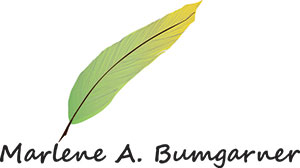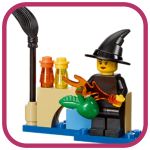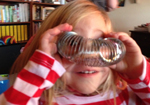 I’m in Washington, D.C., where 5 inches of snow fell in the hours just before my plane landed at National Airport. A long-time friend and her husband took me to to several nearby sights and cultural events, beginning with Fort Ward (crunch, crunch, crunch — that’s us walking from the road to the visitor center). I never knew there were 68 forts encircling the Capitol beltway during the Civil War, did you? Over the next three days we attended a gardening lecture, viewed an art exhibit, saw The Jungle Book performed by 40 enthusiastic young children, ate in a vegetarian gluten free restaurant, wandered around an enclosed (and warm) shopping mall, and enjoyed an excellent musical review based on Bessie Smith’s blues hits of the 1920s and 30s. It was a terrific visit and I enjoyed seeing the Capitol cloaked in snow.
I’m in Washington, D.C., where 5 inches of snow fell in the hours just before my plane landed at National Airport. A long-time friend and her husband took me to to several nearby sights and cultural events, beginning with Fort Ward (crunch, crunch, crunch — that’s us walking from the road to the visitor center). I never knew there were 68 forts encircling the Capitol beltway during the Civil War, did you? Over the next three days we attended a gardening lecture, viewed an art exhibit, saw The Jungle Book performed by 40 enthusiastic young children, ate in a vegetarian gluten free restaurant, wandered around an enclosed (and warm) shopping mall, and enjoyed an excellent musical review based on Bessie Smith’s blues hits of the 1920s and 30s. It was a terrific visit and I enjoyed seeing the Capitol cloaked in snow.
 Fast forward to today, when I spent ten hours at the National Afterschool Association Convention, browsing vendor tables and attending keynotes and lectures. My brain is on overload, but I thought I’d share a couple of ideas and some new research with you.
Fast forward to today, when I spent ten hours at the National Afterschool Association Convention, browsing vendor tables and attending keynotes and lectures. My brain is on overload, but I thought I’d share a couple of ideas and some new research with you.
I was drawn to the Lego display as soon as I saw it, remembering the piece I wrote a couple of weeks ago about Lego Friends. I spent half an hour talking with a gentleman who had one of the most laid-back approaches to sales I’ve ever seen; he is enthusiastic about his product, but he also has a child, and he loved telling me stories about her play experiences. I gleaned a great idea after he showed me their new education line, which include Story Starters . . . small kits that two or three children can use to build microworlds and then tell stories about them. Lego also sells software that allows children to photograph their creations and characters, then write their story and print finished books. I think it’s a great program for afterschool programs, and you can learn more at http://education.lego.com/en-us/learn/elementary/storystarter, but why not do the same thing at home with the Legos you already have, using a smart phone and computer? What a wonderful way to encourage children to create scenarios and plots, tell them to someone else who writes them down, then type them, insert the photos, and share with others.
Just past the Lego table was a booth highlighting a new language and literacy program called Write Brain Books. More about that in another post, but it was fascinatingly like the Lego Story Starters approach, only with pre-illustrated books that children use to create stories. The process includes refining the plot, adding details, adjectives, etc., but eventually leads to the children uploading their story onto the web, then printing a professional-looking book they can keep or put in their school library. Teachers and children who have experienced the whole process tell very powerful stories of child engagement. You can learn a little more about this program at https://writebrainbooks.com. Those of you who know me also know that I am passionate about beautiful children’s books, and I think that reading to children – early and often – is absolutely essential for their emotional and cognitive development. I’m not in any way suggesting that these two activities should replace that. However, children who have been read stories all their young lives naturally begin telling stories around age four or five, and these activities are wonderful ways to engage them in that process. One of our keynote speakers, Jonathan Gotschall, author of The Storytelling Animal: How Stories Make Us Human, encouraged us all to make story an integral part of our life with children, and these two activities seemed like natural ways to do so. Jonathan was interviewed by PBS NewsHour in 2012; a transcript of that interview is here
The lecture I attended on Generation Z was fascinating. Kyle Hawkey from the University of Minnesota presented a very clear and compelling overview of youngsters aged 9 – 21. He describes them as “digital natives who have grown up deeply immersed in the web of technology and inter-connectivity.” Research tells us that not only do their brains look different than ours, but they behave differently, too. (I could have told you that!) Many of these youngsters are in elementary, middle, and high school today. I also see them in my community college classes; they may pack your grocery bags; measure out your double latte; ask if you want fries with that. And in a few years, they’ll be running our country.
It was a hopeful talk, for while Generation Z’ers prefer to communicate with images than words, often use as many as five different screens in a day, and may appear sheltered and entitled to Gen Xers and Baby Boomers, they also love to create things, and are future-focused realists who would rather work for meaningful success than for money. If you want to know more about these young people who are about to inherit the earth, contact Kyle at krhawkey@umn.edu.
Share this post



